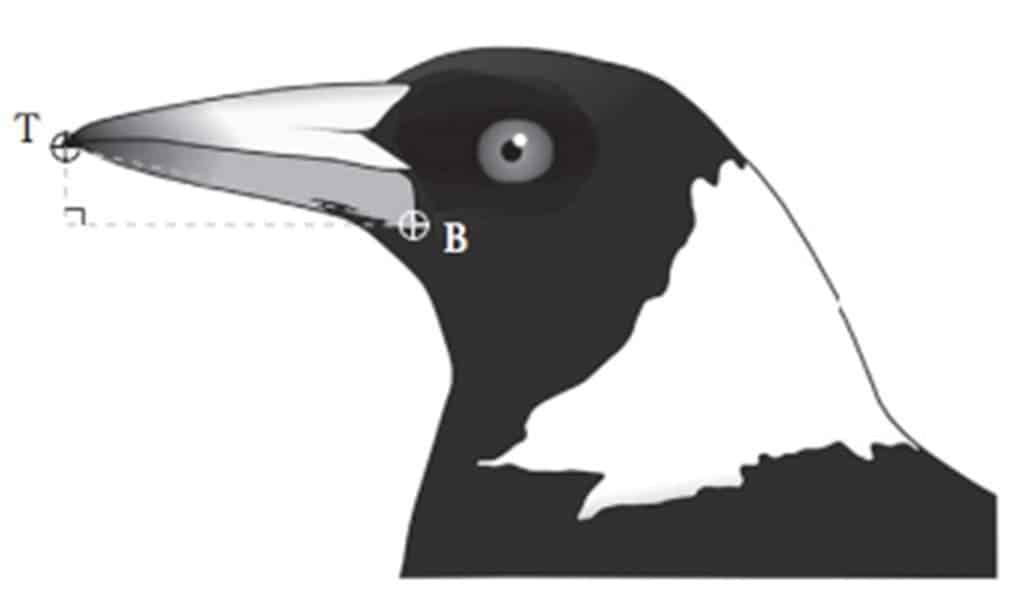Australian magpies can understand the warning calls of other birds, a new study suggests.

Despite their name, Australian magpies (Gymnorhina tibicen) aren’t actually very magpie-y. They’re actually part of a separate family of birds that are indigenous to Australia, Southern Asia, and the Indo-Pacific, while true magpies (family Corvidae) belong to the evolutionary family of crows.
However, the magpies down under seem to have an ace up their wings that should allow them to fit right in with their European counterparts. New research showed the birds can understand signals of at least one other species, the noisy miner, suggesting they could learn to interpret other species as well.
Orange balls and noisy miners
Noisy miners (Manorina melanocephala, not the profession) are a native species of birds that share their ecosystem with the Australian magpie. This small bird of the honeyeater family uses different calls to warn its peers of incoming predators. One characteristic that’s been especially useful for the team is that the noisy miners employ different warning calls for airborne and ground-based predators.
By playing recordings of both calls to wild magpies, the team observed that these could understand the meaning behind the noisy miners’ warnings.
The study took part in four locations in Canberra, including the Australian National University campus and parks in Turner. The researchers lured unsuspecting wild magpies with, funnily enough, grated cheese — then played the recorded calls back to them and filmed the results. As a control, the researchers used a large orange ball. They’d either roll this towards magpies, to gauge their response to ground threats, or throw it around, to see how the birds reacted to airborne predators. Which must have been hilarious to witness.
Over 30 adult, wild magpies had their reactions video-taped twice, while 9 individuals simply flew away.

Image credits Branislav Igic/Australian National University.
The team reports that the Australian magpie’s typical response to perceived threats is a tilting of the beak: the birds showed an average maximum beak angle of 29 degrees for the thrown ball, and an average maximum of 9 degrees when it was rolled. The miners’ aerial warning calls prompted an average maximum beak angle of 31 degrees, while the ground warning prompted an average of 24.
It may seem like useless trivia, but the reason why the team measured these angles is quite central to the research. They wanted to determine not just whether the magpies use the miners’ calls as danger warnings — the authors wanted to see if the magpies can understand what kind of danger each call signaled. The control test proved that magpies will aim their beaks towards the expected elevation of a threat. The second round of tests suggests that they can indeed discern the meaning of the miners’ calls, as the magpies consistently aimed their beaks higher for aerial warning calls than they did for terrestrial warning signals.
“A lot of birds around the world have been shown to respond to a degree of threat, but this is a little bit more nuanced,” says co-author Dominique Potvin. “We’re not looking at ‘if you scream louder does that mean more danger and you hide’. This is a very particular sound that indicates the spatial location of something. For the magpies to actually hone in on that is pretty new.”
Speaking in beaks
The team writes that Australian magpies and noisy miners face the same type of predators: brown goshawks, peregrine falcons and boobook owls from the skies, and foxes, cats, dogs, and snakes on the ground. The two species also frequently share the same ecosystems. But the magpies spend most of their time on the ground looking for food, while noisy miners, completely out of character with their name, like to perch out in trees.
The team believes that listening in to the latter’s warnings gave the magpies an edge against predators. So far, they’re the only species that we know of with this ability.
“It pays for the magpie to pay attention to somebody who has a better view of predators than they do,” Potvin explains. “Magpies are a pretty smart group. We’re not sure if they’re learning this from other magpies or if they’re figuring it out on their own, but the ability is there. We don’t think this would be isolated to Canberra populations.”
Just to make sure the birds weren’t reacting to the sound alone, the team also played a third call: the generic, non-warning call of a crimson rosella (Platycercus elegans), a parrot native to eastern and southeastern Australia. The magpies showed no response to this call.
The paper “Birds orient their heads appropriately in response to functionally referential alarm calls of heterospecifics” has been published in the journal Animal Behavior.


